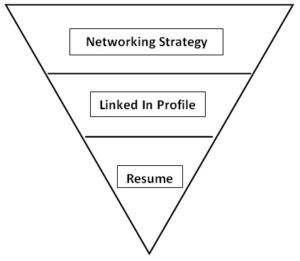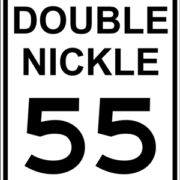“Double-nickeled and Stuck! Getting re-employed at 55 or beyond” – Part Three (a)
OOPS!
I goofed! I didn’t plan ahead very well. There’s no way I can cover Part Three in one post and expect you to hang in through all that needs to be covered. I’m turning Part Three into its own part three series so it’s more digestible. I guess sort of 3a, 3b, 3c.
So, in our three-part part-three , we’re going to try to put today’s job market into the proper perspective for the over-55 job seeker. Part 3a is still pretty long. Hope you can hang with me.
Where do you fit?
I’m confident to say that you are reading this because you fit one of these categories:
- The unemployed
- The soon to be unemployed
- The “working worried”
- The “bored, is this all there is, I’m ready for something more fulfilling”
- The confused, concerned, frustrated, worried – and angry
Did I miss a category? If so, leave what I missed in the comment section below with a detailed description. We’re here to learn also.
While you were asleep – – –
Let me officially welcome you to a job search environment that has NO resemblance to what you did on your last job search.
As an executive recruiter for the past 16 years and job search coach for the last five, I’m in this crazy job market and deal with folks in different situations every day. I know it is a very difficult and different market. For you to succeed, you not only need to be on top of your game, you’re going to be playing a different game. Oh, and BTW, in addition to increased competition and complexity, we now get to sprinkle in something that will cling to us like a barnacle for the balance of our days – ageism.
Here’s a story of a coaching client of a few years back that epitomizes the traps that a new entrant into the search process can fall into. This talented lady was only in her late 40’s but had been laid off from a business office management position where she had worked for nearly ten years. Divorced with an active teen-ager at home (equestrian hobby – expeeensive!!), she immediately launched her own search. In desperation, she had reached out to me with this story:
- Applied and sent her resume to 238 positions posted on various company websites and job boards over a nine-month period
- Had four interviews, three of which were scams. One legitimate opportunity which she wasn’t selected for.
- Had burned through the meager savings she had (nasty divorce!) and her unemployment checks were about to go away.
It had been ten years since a job change. She actually got the job she just lost through a referral from a friend. So her exposure to the job market was very thin. She did what she assumed any job seeker would do.
I wish it were an isolated story. It’s not. It repeats with the majority of the calls I have with over-50 job seekers. I had one this week with a PhD-level IT professional who had applied at over 50 locations in a 6-week long search effort with no interviews and only four actual responses – all form-letter turn downs.
Black-hole job seeking

Applying is a natural response to a job market re-entry. But it doesn’t acknowledge what economic shifts, technology and social media have done to the job market over the last 20 years, particularly in the last 5-10.
Back in the dark ages of 1995 when the internet was still in diapers, applying is what you did, but you did it by faxing your resume or filling out a paper application at the company location.
Then came the online era with CareerBuilder (1995), Monster (1999), Indeed.com (2005) and their ilk along with Applicant Tracking Systems (ATS) technology. The process hadn’t really changed much – you could now just do it online from your desktop. You still had to wait for a response but now for an email rather than a phone call or snail-mail letter.
Companies started getting hammered with resumes. According to Forbes, in 2013 the average number of people who applied for any given job was 118.
Inc. Magazine says it was 250.
Applicant tracking systems developed to handle this onslaught. With their development, the whole system shifted from “screening in” to “screening out.”
Applicant tracking systems screen out by reading keywords and keyword phrases, incorrect headings, formatting, wording/grammar. They search for job gaps, look for age clues (I’m sure they wouldn’t admit to that!), compare your tasks and duties to the HR boilerplate job description – they seem to have no limit to the elimination tactics that can be programmed in.
Liz Ryan is a veteran HR professional and job coach. Her article “How Technology Killed Recruiting” provides a really good, helpful review of ATS technology.
Today, it’s estimated that 80% of corporate recruiting departments use an ATS.
Companies: 1 – Candidates: 0
– if you are keeping score. What used to work, and what most job seekers still think works, is a black hole.
Forbes says only 23% who apply will get an interview. Inc. says only 2.5%. My coaching clients agree with Inc. So do I. Any frustrated job seeker I’ve talked with doesn’t come close to the 23% if they pursue this self-directed, “spray and pray” strategy.
The hidden job market
Permit me to deepen the black hole even further.
Upwards of 75% of real jobs aren’t even posted! They’re hidden.
What you say? Why?
Maybe the hiring manager isn’t ready to pull the trigger. Perhaps budget approval is pending. Maybe he/she doesn’t trust his HR group to find the right talent and prefers to work her/his own professional network first. For sure, he/she doesn’t want to be buried in the off-target resumes the ATS is likely to produce. Perhaps they need to replace someone and are using a recruiting firm to keep the search confidential. Or maybe the company is posting it internally hoping their internal referral system will kick in. Or maybe they just don’t have the budget to post it out.
Just know that it’s a big percentage and it’s where the better jobs are – hidden from your view.
So what’s a poor job seeker to do? Heard enough to know that a mindset shift is in order? No? Then chew on this – upwards of 80% of jobs are filled through networking, only 10-12% through online postings.
Think about it. When you apply on line, you are doing what every other lazy, uninformed job seeker is doing. Those aforementioned job-applications-per-job-posting confirm that. You have chosen to be part of a very “un-select” group. Can I say “sheep-like follower” and have you still hang with me?
EGAD! I have to network?
OK. Enough already with the problem. Get me to a solution.
Here it is! Network your ass off!

Scroll back about four paragraphs. See that 80% number. It’s for real.
I know. You don’t do job fairs and Junior Chamber of Commerce networking events. Elevator speeches in a noisy room over cheap wine to an equally desperate stranger just isn’t your thing. That’s OK. Those events attract the same people that are applying and are continuing to show their naivete and desperation by working these events.
You need to take it up a notch – a big notch.
Picture this: a group of “talent acquisition” professionals (aka internal, corporate HR recruiters) whose primary job is to kick you into the black hole. Key understanding here: when you apply, you land right in the middle of the human resources department. So what?
HR recruiters have NEVER, NEVER been able to say “yes” to a hire. But they have ALWAYS, ALWAYS been able to say “NO”. Just suppose they had a bad hair day – or are buried in resumes and days behind. Or just plain don’t give a s*#t. Still like your odds?
Where do you need to be? With someone who says YES (forgive me for the “duh”). That would be? The hiring manager (another “duh” – sorry). How are you going to reach her/him? Not through an HR rep of any kind – they go to a special school to learn to lay down their lives to protect the hiring manager from direct contact by a candidate. How dare you make them look bad!
Summary:
- Don’t make HR your starting point by applying. You’ve injected a roadblock on the front end of your search.
- Find a direct route to the hiring manager.
- Realize and accept the fact that you will eventually have to deal with HR. Remember that they do things like schedule interview times, explain and administer benefits, complete paperwork. They are policy and procedure people – and they are good at it.
- So don’t piss them off. At any stage of the process, they can still cut you off at the knees and destroy your progress. Consider them a necessary part of a successful triumvirate – of you, HR and hiring manager- and treat them with respect and be responsive to the things they need from you in the process.
Where do I start?
It has to start with a success mindset that is tempered with the knowledge that this could be a real slog with the possibility of numerous setbacks and disappointments along the way. There will be temptations to compromise, to take a “settle for” position. And that may be necessary in the short term to meet financial needs. But it needn’t be permanent.
Your success in your job search will be a test of perseverance and will depend on your belief in yourself and your ability to stay with a process i.e. a systematized approach to the activities that will eventually guarantee your success.
An inverted pyramid strategy
One of the ways I have found that removes some of the mystery and angst with my coaching clients and sets them up for success is to view the start in the form of an inverted pyramid with three components:

With my coaching clients, we start from the bottom and work up. I put the relative importance of each component in that order. Resume and Linked In Profile are foundational to the most important component – networking. They must be done well.
 Resume
Resume
Here’s where I raise the hackles on professional resume writers, some of whom are friends, most all of whom are outstanding at their trade.
The resume is very important. However, I find that most job seekers inflate its importance. I put it as the least important of the three components for a few simple reasons:
- Nobody ever hired anybody off a piece of paper.
- An effective job search doesn’t lead with a resume. The resume should follow activities that result in requests for the resume.
- Resumes become the most relevant component in a strategy that is limited to applying to posted jobs and/or using third party recruiters.
I’m not a professional resume writer. I could be – and pick up a few extra Benjamins each month I suppose, but I choose not to. I leave the choice to the client – shell out $500 to $1,500 for a “Picasso” or work with me and let’s build the resume together to accepted formatting and content standards.
Here’s my strategy with this that has proven successful with coaching clients.
Generally accepted resume formats, or templates, aren’t complicated. A skilled resume writer is trained to pull out of you the skills, responsibilities and accomplishments in your work history, your educational background and relevant other experiences and wordsmith it into a really pretty doc with boxes/graphs/tables/shaded areas that help justify their fee using semi-advanced word processing composition skills – true “Picassos”. They are good and earn every penny of what you are willing to cough up.
My position is that you don’t need to spend the money on a Picasso because, if you are conducting an effective networking-based job search, the resume is in a secondary position and not the lead position.
So I help my coaching clients become the author of their own resume which then forces them to dig deep into their past and resurrect the accomplishments that will add power to the resume and, more important, to their stories. It’s not hard for the two of us together to put it into an acceptable, professional format without having to go to a workshop on Microsoft Word composition or spend half of next month’s mortgage on a Picasso.
Thumbs down on density and responsibilities
I’ve probably seen 10,000 resumes over 16 years and 95% of them were stinkers, even at the exec level. Why? Because they almost always focus on responsibilities at the expense of accomplishments. And invariably they are too dense and try to say too much.
Hey, I get it. When you are in the “my resume is my salvation” mindset, you are going to want to try to say everything about you in two pages – hence size 8 font and a ton of boring, self-indulgent, inflated, irrelevant information. And, might I say, almost guaranteed rejection by a busy, fast-moving hiring manager or recruiter.
So that’s where I go with coaching clients and where you should go if you are going to self-direct and write your own document. Description of responsibilities should be brief and the list of number-based, quantifiable accomplishments should dominate the resume.
Here’s another clue: recruiters and busy hiring managers like white space. They abhor size-8 font and pontification.
A serendipity
It’s amazing to witness what this exercise does by taking people deeper into their past and re-discovering the high level of impact they have had but had either forgotten or didn’t feel was significant.
This exercise has a couple of very positive serendipitous effects. First, by resurrecting and acknowledging forgotten/overlooked accomplishments, a new self-confidence emerges. That depression, anger and settle-for attitude you brought with you after the groin-kick starts to turn. Secondly, this exercise plays an amazing role in preparing the seeker for conducting a “knock their socks off” interview.
Summary
To sum up part 3a:
- The majority of jobs (and the best) are hidden.
- A “spray-and-pray” strategy is a fool’s journey.
- Don’t front-end your search with a trip into the HR Department, aka “black hole.”
- Your resume is very important and it needs to be crisp and concise. But don’t lead with it.
- Lists of responsibilities on a resume don’t get hiring manager attention, achievements do. Emphasize hard-hitting, quantified, problem-solving, attention-getting accomplishments. Prove that you have had impact.
Next step? Entry into the social media world. Nope – not the Facebook world. The Linked In world – the default platform for getting found as a job seeker. Next week – Part 3b – why you need Linked In.
Leave your thoughts about this part in the comments section below. Have you had good or bad experiences in your job search leading with your resume? We’d really like to get your feedback and hopefully learn something new about experiences out there in this ever-evolving job market.




I’ve been through a job search program, and this ‘mindset’ you provide clarifies the process and key elements in a way that is better than I remember receiving before. You made this painful process interesting, real and clear. Thank you, pat
wonderful points altogether, you simply gained a new reader. What would you suggest about your post that you made some days ago? Any positive?